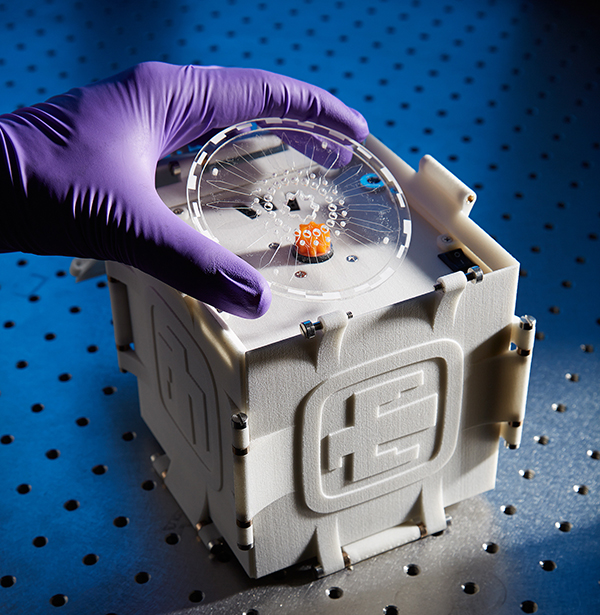Sandia inks agreement with Lifeloc to develop drug abuse technology

Sandia inks license agreement with Lifeloc to develop drug abuse technology
Sandia has signed a licensing agreement with Lifeloc Technologies Inc. that will allow the manufacturer to develop and market Sandia’s patented SpinDx technology to detect drug abuse.
SpinDx uses a centrifugal disk with microfluidic flow paths that allows multiple tests to be carried out on a single, small sample. This technology, sometimes referred to as “lab on a disk,” could be used to develop devices and tests for roadside, emergency room, and workplace environments to rapidly and quantitatively detect a panel of drugs of abuse.
Technology has broad applications
“SpinDx can run multiple assays in a minute from a single drop of blood or other bodily fluid, making it a great fit in Lifeloc Technologies’ work in helping to detect drug abuse,” says Anup Singh (8600), director of Sandia’s Biological and Materials Sciences Center. “SpinDx has broad application beyond detection of drugs of abuse to food and water safety, medical diagnostics, and bio-agent detection.”
Lifeloc Technologies manufactures and exports breath alcohol testers and related training and supplies for workplace, law enforcement, corrections, and international customers.
Lifeloc CEO Wayne Willkomm says the license agreement is a great way for Lifeloc to leverage Sandia’s technical resources to advance SpinDx to development and ultimately into commercialization.
“As marijuana legalization spreads across the country and the world, the need to get rapid and reliable testing methods to law enforcement officers will only increase,” Willkomm says. “Providing this technology is consistent with Lifeloc’s corporate mission to make our roads and workplaces safer.”
This technology began with Sandia’s basic research to develop devices to rapidly identify trace levels of biotoxins to combat terrorism. It has been advanced to drugs of abuse through years of work under a cooperative research and development agreement between Lifeloc and Sandia. Feasibility of detection has already been demonstrated for very low levels of delta-9-THC, cocaine, and methamphetamine.